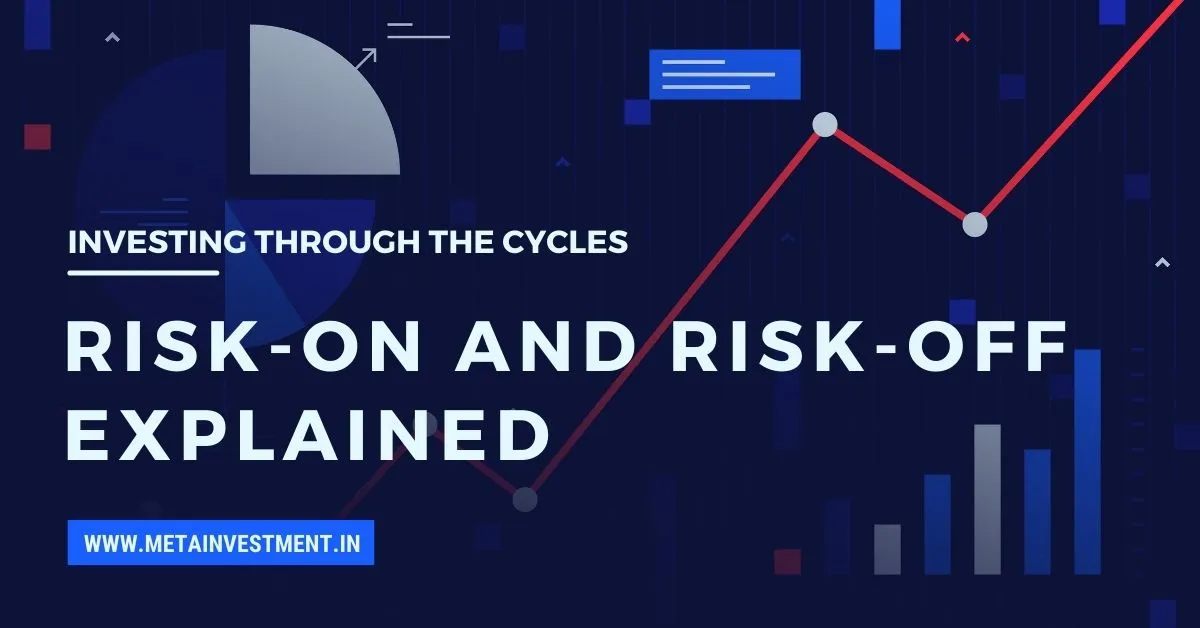One of the most critical aspects of managing your portfolio is understanding market sentiment and how it influences investment decisions. Two key concepts that shape market behavior are risk-on and risk-off environments.

These terms describe the collective mood of investors and their appetite for risk, which can significantly impact asset prices and portfolio performance. In this blog, we’ll explore what risk-on and risk-off environments mean, how to identify them, and how to adjust your investment strategy accordingly.
What Are Risk-On and Risk-Off Environments?
Risk-On Environment
A risk-on environment occurs when investors are optimistic about the economy and financial markets. During these periods, investors are more willing to take on risk in pursuit of higher returns. This optimism is often driven by positive economic data, strong corporate earnings, accommodative central bank policies, or geopolitical stability.
In a risk-on environment:
-
Equity markets rise, particularly in growth-oriented sectors like technology, consumer discretionary, and emerging markets.
-
Riskier assets such as small-cap stocks, cryptocurrencies, and high-yield bonds outperform.
-
Safe-haven assets like gold, U.S. Treasuries, and defensive stocks (e.g., utilities) may underperform as investors shift away from them.
Risk-Off Environment
A risk-off environment, on the other hand, is characterized by investor caution and a preference for safety. This typically occurs during periods of economic uncertainty, market volatility, or geopolitical tensions. Investors prioritize capital preservation over growth, leading to a sell-off in riskier assets.
In a risk-off environment:
-
Equity markets decline, especially in cyclical and growth sectors.
-
Safe-haven assets like gold, U.S. Treasuries, and defensive stocks (e.g., healthcare, utilities) perform well.
-
Riskier assets such as emerging market equities, high-yield bonds, and cryptocurrencies may experience significant declines.
What Drives Risk-On and Risk-Off Sentiment?
Several factors can influence whether the market is in a risk-on or risk-off mode. As an investor, it’s essential to monitor these drivers to make informed decisions:
-
Economic Data: Strong GDP growth, low unemployment, and rising consumer confidence often fuel risk-on sentiment. Conversely, weak economic data can trigger risk-off behavior.
-
Central Bank Policies: Accommodative policies (e.g., low interest rates, quantitative easing) encourage risk-taking, while tightening measures (e.g., rate hikes) can lead to risk-off sentiment.
-
Geopolitical Events: Wars, trade tensions, or political instability can cause investors to flee to safety.
-
Corporate Earnings: Strong earnings reports and optimistic guidance can boost risk appetite, while disappointing results may lead to risk-off behavior.
-
Market Volatility: A spike in volatility (e.g., a rising VIX index) often signals a risk-off environment, while low volatility is associated with risk-on conditions.
How to Identify Risk-On and Risk-Off Environments
To determine whether the market is in a risk-on or risk-off phase, watch for these indicators:
-
Asset Performance:
-
Risk-On: Stocks (especially growth and cyclical sectors), cryptocurrencies, and high-yield bonds are rising.
-
Risk-Off: Safe-haven assets like gold, U.S. Treasuries, and defensive stocks are outperforming.
-
Market Breadth:
-
Risk-On: Broad-based market rallies with participation from multiple sectors.
-
Risk-Off: Narrow market leadership, with only defensive sectors performing well.
-
Volatility Index (VIX):
-
Risk-On: Low VIX levels indicate calm markets and investor confidence.
-
Risk-Off: High VIX levels signal fear and uncertainty.
-
Currency Movements:
-
Risk-On: Currencies of commodity-exporting or emerging market countries tend to strengthen.
-
Risk-Off: The U.S. dollar, Japanese yen, and Swiss franc often appreciate as investors seek safety.
Investment Strategies for Risk-On and Risk-Off Environments
Your wealth manager’s goal is to help you navigate these environments effectively. Here’s how you can adjust your portfolio based on market sentiment:
Risk-On Strategies
-
Overweight Growth Stocks: Focus on sectors like technology, consumer discretionary, and emerging markets.
-
Invest in Cyclical Sectors: Allocate to industries like industrials, financials, and materials that benefit from economic expansion.
-
Consider Leveraged ETFs: In a strong risk-on environment, leveraged ETFs can amplify returns (though they come with higher risk).
-
Reduce Exposure to Safe Havens: Trim positions in gold, bonds, and defensive stocks.
Risk-Off Strategies
-
Increase Allocation to Safe Havens: Invest in gold, U.S. Treasuries, and defensive sectors like utilities and healthcare.
-
Focus on Quality: Prioritize high-quality companies with strong balance sheets and consistent earnings.
-
Raise Cash Levels: Holding cash or cash equivalents can provide flexibility to capitalize on opportunities when markets stabilize.
-
Avoid High-Risk Assets: Reduce exposure to speculative investments like cryptocurrencies and small-cap stocks.
The Importance of Staying Flexible
Market sentiment can shift rapidly, and staying rigid in your investment approach can lead to missed opportunities or unnecessary losses. Wealth manager’s emphasize the importance of:
-
Diversification: A well-diversified portfolio can help mitigate risks during both risk-on and risk-off environments.
-
Active Monitoring: Regularly reviewing economic data, market trends, and geopolitical developments allows for timely adjustments.
-
Long-Term Perspective: While short-term market sentiment is important, aligning your portfolio with your long-term financial goals is paramount.
Current situation in Indian Market
The Indian stock market is currently experiencing a period of volatility and uncertainty, making it difficult to definitively say whether it’s a “risk-on” or “risk-off” environment. Here’s a breakdown of the factors at play:
Factors suggesting a risk-on environment:
-
Strong economic growth: India’s economy is expected to continue its robust growth trajectory, driven by domestic consumption and government spending.
-
Positive long-term outlook: Many analysts are bullish on the long-term prospects of the Indian stock market, citing factors such as increasing domestic investment, a growing middle class, and government reforms.
-
Resilient domestic flows: Despite FII selling, domestic institutional and retail investors have been supporting the market, indicating confidence in the Indian economy.
Factors suggesting a risk-off environment:
-
High valuations: Indian stock market valuations are relatively high compared to historical levels and other emerging markets, raising concerns about potential corrections.
-
FII selling: Foreign institutional investors have been consistently selling Indian equities due to global uncertainties and attractive valuations in other markets.
-
Global headwinds: Concerns about global economic slowdown, rising interest rates, and geopolitical tensions are impacting investor sentiment.
-
Technical indicators: Some technical indicators suggest that the market might be overbought, increasing the possibility of a downturn.
Overall:
The current market scenario in India is complex and influenced by a mix of domestic and global factors. While the long-term outlook remains positive, there are also significant risks in the short term. It’s crucial for investors to carefully assess their risk tolerance and investment horizon before making any decisions.
Final Thoughts
Understanding risk-on and risk-off environments is crucial for making informed investment decisions. By recognizing the signs of these market phases and adjusting your strategy accordingly, you can better protect your portfolio during downturns and capitalize on opportunities during upswings. Your wealth manager’s role is to guide you through these market cycles, ensuring your investments align with your risk tolerance and financial objectives.
If you have any questions or would like to discuss your portfolio in light of current market conditions, feel free to reach out. Together, we can navigate the complexities of the market and work toward achieving your financial goals.
Disclaimer: This blog is for informational purposes only and should not be construed as financial advice. Please consult with a qualified financial advisor before making any investment decisions.













